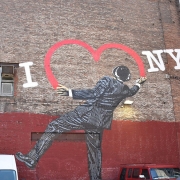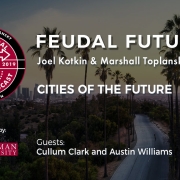How New York City Can Survive
In 1912, James Weldon Johnson wrote that New York City is “the most fatally fascinating place in America”. The city, he explained, “sits like a great witch at the gate of the country, showing her alluring white face and hiding her crooked hands and feet under the folds of her wide garments — constantly enticing thousands from far within, and tempting those who come from across the seas to go no farther.” But that was over a century ago. Today, New York appears to be less a “great witch” than an embattled crone, with many residents fleeing to lesser cities and towns.
When the great platform of urban supremacism, The New York Times, starts publishing articles about the “urban doom loop” facing American cities, it is clear the game is up. Yes, there has been much hand-wringing by the experts and brave words about the inevitable resurgence of cities, but the trends against dense urbanity are too powerful for even the most deluded to deny.
Only by embracing change can the city hope to recover something of its past glory. In the coming decades, New York, the country’s largest city since 1790, appears destined to decline, turning into what Terry Nichols Clark has described as the “city as entertainment machine”. This new role follows H.G. Wells’s vision of cities as largely childless “places of concourse and rendezvous”, ideal for the wealthy, necessary for their servants and a beacon to the young and the culturally aware.
The tired refrain that cities always recover ignores the spectre of long-term, permanent decline. History is replete with cities fading into obscurity and even non-existence, from ancient Carthage to Ctesiphon, capital of ancient Persia, Vijayanagar in India or Great Zimbabwe in Africa. Across the West, major industrial cities have been shrinking, from Liverpool and Manchester to Osaka and Adelaide, with little prospect of rapid recovery. For over a century, growth has shifted to the suburbs and exurbs — not only in the United States, but in the old cities of Europe too, including London and Paris.
These trends accelerated during the pandemic. Even as the virus has receded, the return to the office has been slower than some predicted. And of all the nation’s major cities, New York has suffered the slowest post-pandemic job recovery, with midtown offices still half-empty.
Yet this drift was taking shape even before the pandemic. Across the US, office occupancy has been declining since 2000, while construction of new space has fallen consistently for 25 years. In 2019, before the pandemic, construction was one-third the rate of 1985 and half that of 2000. Now faced with a recession or at least a slowdown, office absorption is likely to remain at historically low rates, with the potential loss of value in central-business-district offices reaching $500 billion in New York alone.
But even as New York’s office economy struggles, there are distinct signs of life, driven not by necessity but by people and industry. New York, for all its plight, remains dominant in those fields — media, culture, and tourism — where urban areas remain competitive with the hinterland. It also includes medical facilities, which need highly skilled workers and where agglomeration effects allow the city to export medical services. Less positive is its decision to bet its future on casino gambling and pot stores, not exactly a substitute for higher end activities. Yet overall, in this new urban order, New York is easily the best placed of America’s cities to thrive. It still attracts the global rich, boasts some of the world’s best museums and restaurants, as well as large arts communities.
Read the rest of this piece at UnHerd.
Joel Kotkin is the author of The Coming of Neo-Feudalism: A Warning to the Global Middle Class. He is the Roger Hobbs Presidential Fellow in Urban Futures at Chapman University and Executive Director for Urban Reform Institute. Learn more at joelkotkin.com and follow him on Twitter @joelkotkin.
Homepage photo: Street art by Nick Walker via Wikimedia under CC 4.0 License.









